International links in CCFS
BACKGROUND
CCFS’ International links provide leverage of intellectual and financial resources on a global scale, and an international network for postgraduate experience. International Partners provide the core of such collaborations. Other international activity includes funded projects and substantial collaborative programs with major exchange-visit programs in France, Norway, Germany, United Kingdom, New Zealand, Canada, USA, Taiwan, Italy, Spain, South Africa, South America, China, Brazil, Mexico, Japan, Thailand and Russia.
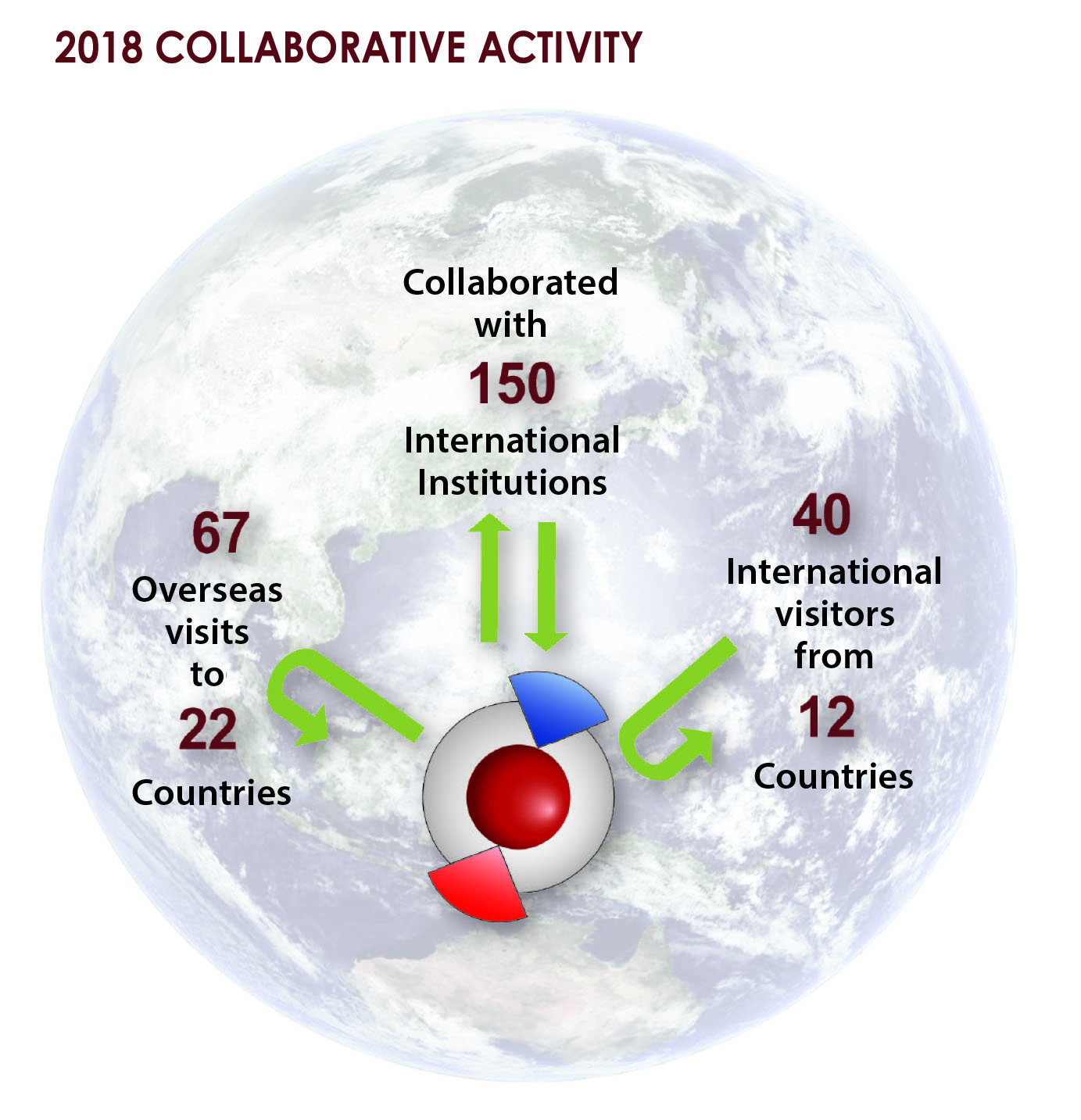
FORMAL MEMORANDA OF UNDERSTANDING (MOU)
Formal MOU between international institutions promote the Centre’s collaborative research and facilitate visits by Centre staff and postgraduates as wellas joint PhD research projects. CCFS has agreements with the following international institutions:
- China University of Geosciences (Wuhan) - 2011 (& Cotutelle)
- Constitution of the International University Consortium in Earth Science - 2012
- University of Science and Technology of China, Hefei - 2012 (& Cotutelle)
- Institute of Geology and Geophysics, China University of Geosciences (Beijing) - 2014
- Institute of Tibetan Plateau Research, CAS (Beijing) - 2014
- Helmholtz Centre Potsdam GFZ German Research Centre for Geosciences, Germany - 2015
COTUTELLE MOU
Cotutelle MOU aim to establish deep, continuing relationships with international research universities through joint research candidate supervision. CCFS has agreements with the following international institutions:
- China University of Petroleum, Beijing, China
- Durham University, United Kingdom
- Eötvös Loránd University, Hungary
- Friedrich-Alexander-University of Erlangen, Nuremberg, Germany
- Nanjing University, China
- Pierre and Marie Curie University, PARIS VI
- Peking University, China
- São Paulo University, Brazil
- Universidad de la Republica, Uruguay
- Université Montpellier 2, France
- Université Paul Sabatier, France
- University Jean Monnet, France
- University of Zaragoza, Spain
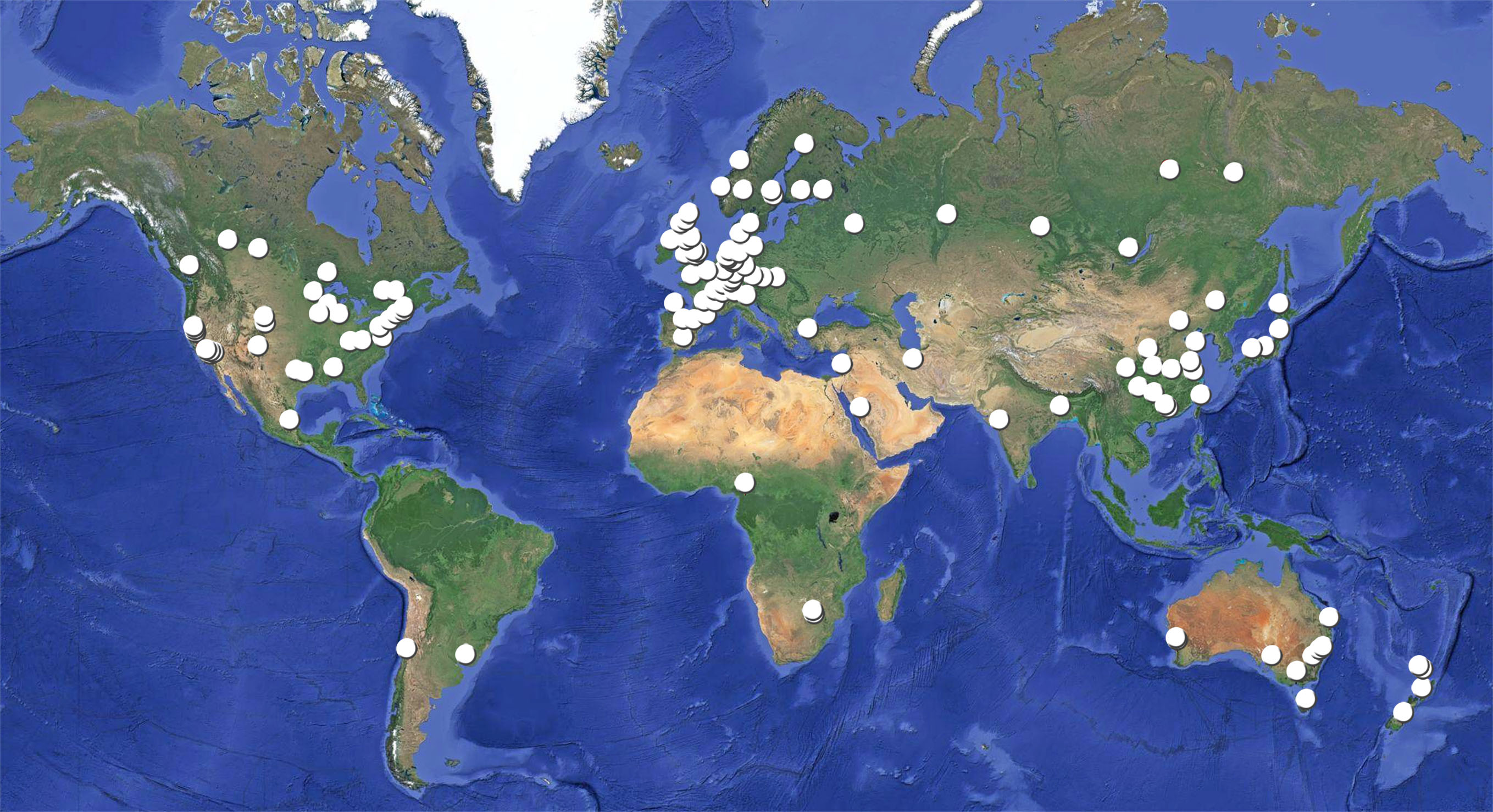
CCFS INTERNATIONAL COLLABORATIVE NETWORK
INTERNATIONAL LINKS - 2018 SELECTED HIGHLIGHTS
- A collaborative project between the Institute of Geology and Geophysics, China Academy of Science, Beijing (IGG CAS), CCFS, Geoscience Australia, and ANSIR (Australian facilities for Earth sounding) resulted in a 4-year passive seismological deployment (China-Western Australia Seismic survey - CWAS) along a 900 km profile across Western Australia from Port Hedland to the southwestern border of the Kimberly Craton. The station spacing is 10-15 km, using 80 broadband seismic stations and extends beyond the continent margin in the Canning Basin using ocean-bottom seismometers (CANPASS).
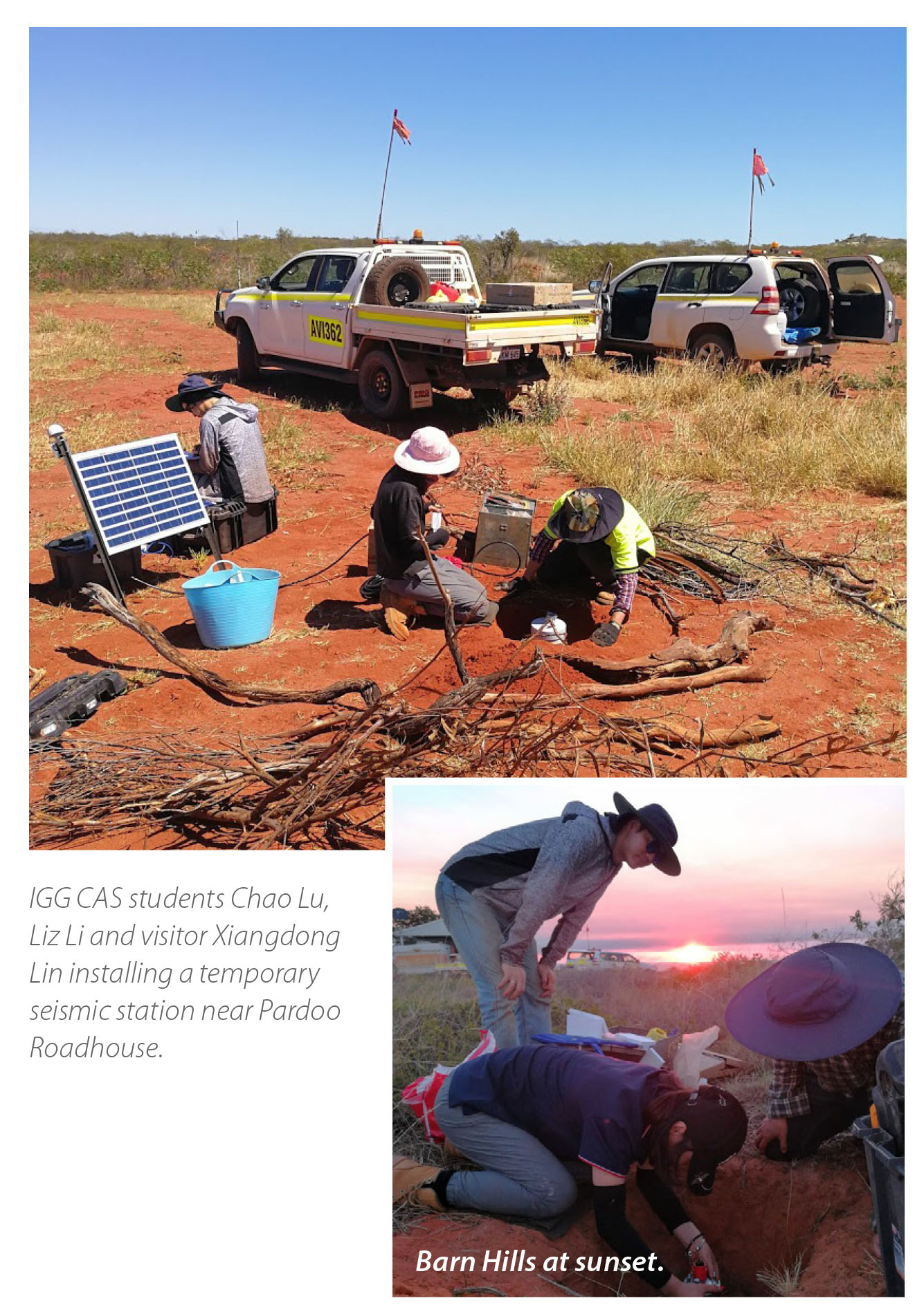
- A collaborative project between the Institute of Geology and Geophysics, China Academy of Science, Beijing (IGG CAS), CCFS, Geoscience Australia, and ANSIR (Australian facilities for Earth sounding) resulted in a 4-year passive seismological deployment (China-Western Australia Seismic survey - CWAS) along a 900 km profile across Western Australia from Port Hedland to the southwestern border of the Kimberly Craton. The station spacing is 10-15 km, using 80 broadband seismic stations and extends beyond the continent margin in the Canning Basin using ocean-bottom seismometers (CANPASS).
The Phase 2 installation of the CWAS project was completed successfully in September 2018. Colleagues and students from the Geological Survey of Western Australia, the Institute of Geology and Geophysics, Chinese Academy of Sciences and CCFS Macquarie University put 38 broadband portable seismic stations in the field. These “in-filled” the Phase 1 deployment which started recording late 2017. Combining stations from the Ocean-Bottom-Seismic array (CANPASS), early portable deployments by ANU and permanent networks of Geoscience Australia and the German GEOFON program, the CWAS project provides an exciting opportunity to seismically map the crust and lithosphere architecture beneath both onshore and offshore regions of the Canning.
This will help us better understand the regional tectonics through time, including, shaping up the continent in the first place, subsequent intracratonic rifting and basin forming in the Paleozoic, late Jurassic sea-floor spreading of the Neotethys Ocean, and the present-day transition from passive margin to active subduction along the continent’s northern boundary.
- Delegates from a range of international institutions visited CCFS in 2018 to discuss programs including the exchange of staff, joint research activities and the exchange of students.
- A collaborative research agreement continued with the China University of Geosciences (Wuhan) with funding by the Chinese Scholarship Council (CSC). This grant provides a living allowance and travel between China and Australia for students and visiting scholars. Students and researchers funded by this project will study and work under the project’s aims, integrating geological, geochemical, geophysical and experimental techniques to study the structure, composition, geodynamics and metallogeny of the deep lithosphere and beyond.
- Prof Zheng-Xiang Li continued as Co-director of the Australia-China Joint Research Centre for Tectonics and Earth Resources (ACTER). ACTER is a joint research centre led by the Institute for Geoscience Research at Curtin University, and the Institute of Geology and Geophysics of the Chinese Academy of Sciences, with participants from collaborating institutions from the two countries. CET, TIGeR and GEMOC are all Key Australian Partner Institutions (http://tectonics.curtin.edu.au).
ACTER aims to facilitate: collaborative research and research training in geotectonics and mineral and hydrocarbon resources, the exchange of staff and joint supervision of research students, shared access to analytical facilities, the organisation of joint conferences and annual focused field- based workshops and the exchange of academic materials and information.
- In April 2018, Sue O’Reilly, Steve Foley, Bill Griffin and Yingjie Yang travelled to China on a CCFS mission to enhance collaborations and cotutelle relationships. They visited China Academy of Science Guangzhou, China University of Geoscience Wuhan, Institute of Geology and Geophysics, China Academy of Science Beijing, and Nanjing University. Sue O’Reilly also met with Professor Zengqian Hou (Vice- President National Science Foundation of China (NSFC), and in charge of Department of Earth Sciences and Department of Management Sciences under the Ministry of Science and Technology).
- At Guangzhou Institute of Geochemistry (GIG), Steve Foley discussed future collaboration with Eiichi Takahashi, the leader of a new experimental laboratory.
- While in Wuhan Steve met with Yongsheng Liu, co-supervisor of MQ cotutelle student Chengyuan Wang and visiting 2019 PhD student, Mingdi Gao. Another post-doc from Wuhan, Chunfei Chen, will join CCFS in May 2019.
- CCFS Director, Professor Sue O’Reilly, is a group leader of one of seven new UNESCO-IUGS IGCP projects, announced on the 21 February 2018, aimed at providing insights on current global issues and supported by the International Geoscience Programme (IGCP) (https://en.unesco.org/ news/new-projects-will-explore-geological-record-support- sustainable-development). “IGCP 662: Orogenic architecture and crustal growth from accretion to collision” aims to conduct comparative studies of several types of orogens (accretionary and collisional) to better understand the dynamics of Earth’s crust, and the genesis and distribution of mineral deposits (metallogenesis). It will include a comparative study of the Central Asian Orogenic Belt (CAOB); one of the world’s largest accretionary orogens spanning six nations and evolving over some 800 million years, the Tethyan orogenic belt; the world’s youngest extensive collisional and metallogenic belt, and other composite orogens. The project included participants from more than 143 countries with diverse socio- economic and political contexts.
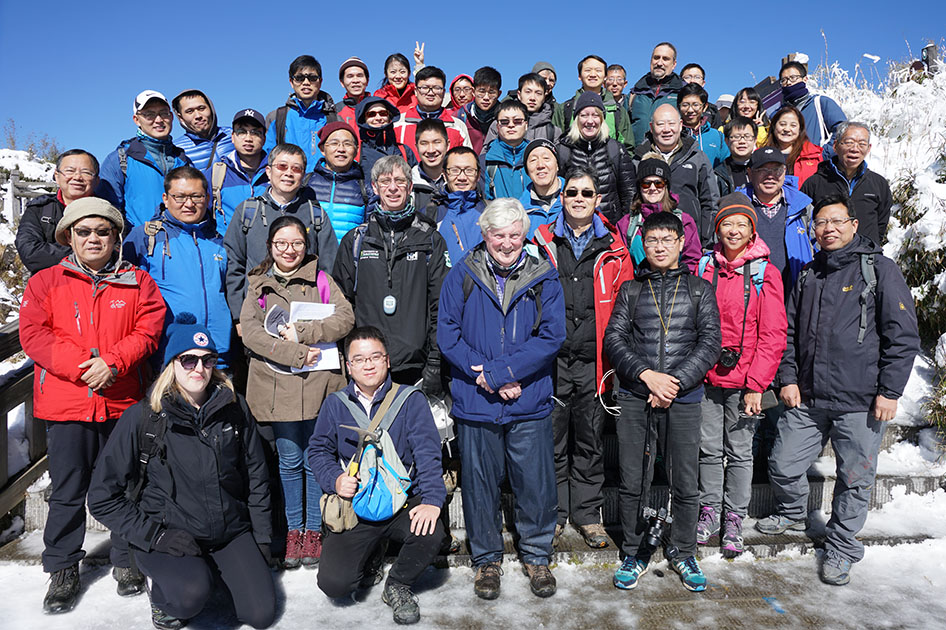
First IGCP-662 workshop.
The First IGCP-662 workshop was held successfully on the 23rd of September 2018. It included a five-day pre-conference field excursion to Dunhuang and Liuyuan in Gansu province, NW China. A two-day workshop and a one-day post-workshop training course in Beijing followed. Sue O’Reilly and Bill Griffin each delivered invited talks and Short Course lectures on Lithosphere Mapping and TerraneChron®.
IGCP-662 project information and upcoming events are available from http://igcp662.org.cn/.
- The UNESCO-IUGS IGCP Project 648, Supercontinent cycles and global geodynamics continued in 2018. The project brings together a diverse range of geoscience expertise from around the world, including three CCFS CIs, to explore the occurrence and evolution history of supercontinents through time and construct global databases of geotectonics, mineral deposits and the occurrences of past mantle plume events.
The 2018 IGCP 648 Field Symposium “From Rodinia to Pangea: Geodynamics, Life and Climate” visited the Yichang, Three Gorges Region, China on the 1-9 November 2018. For more information visit here.
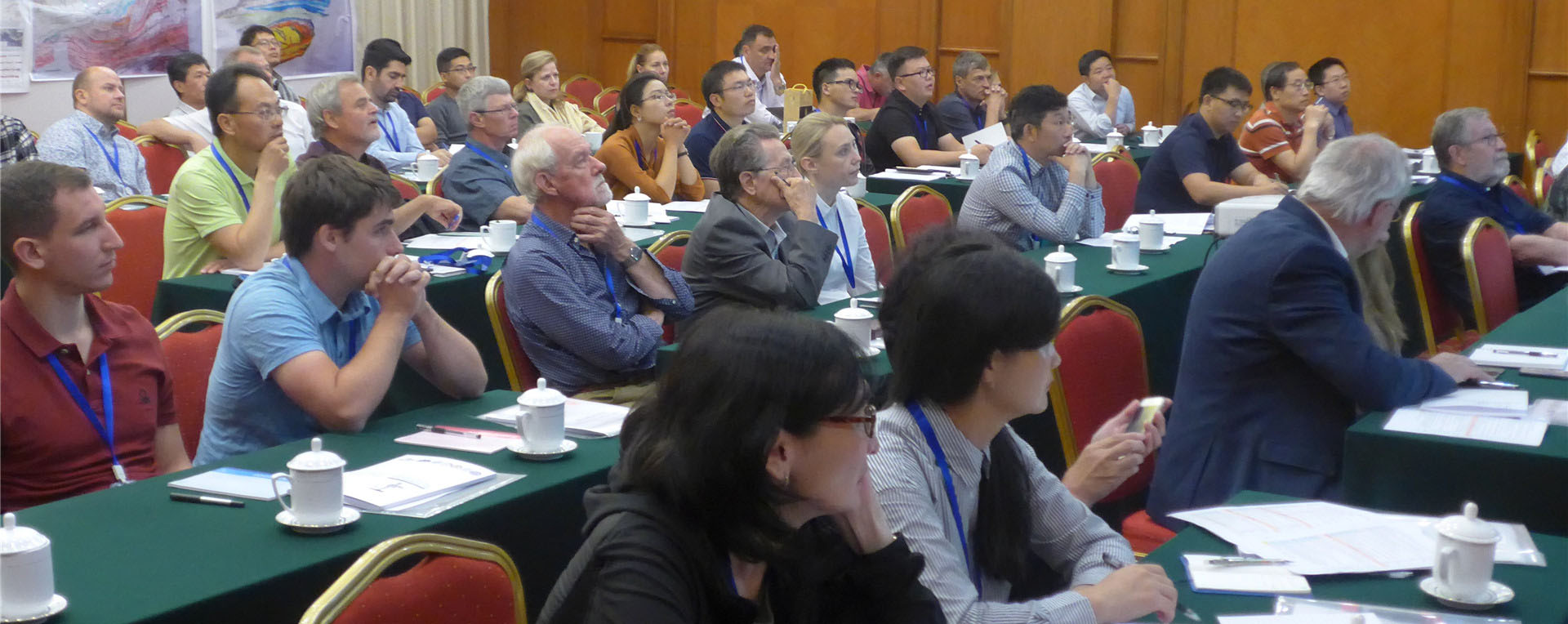
2018 IGCP 648 Field Symposium.
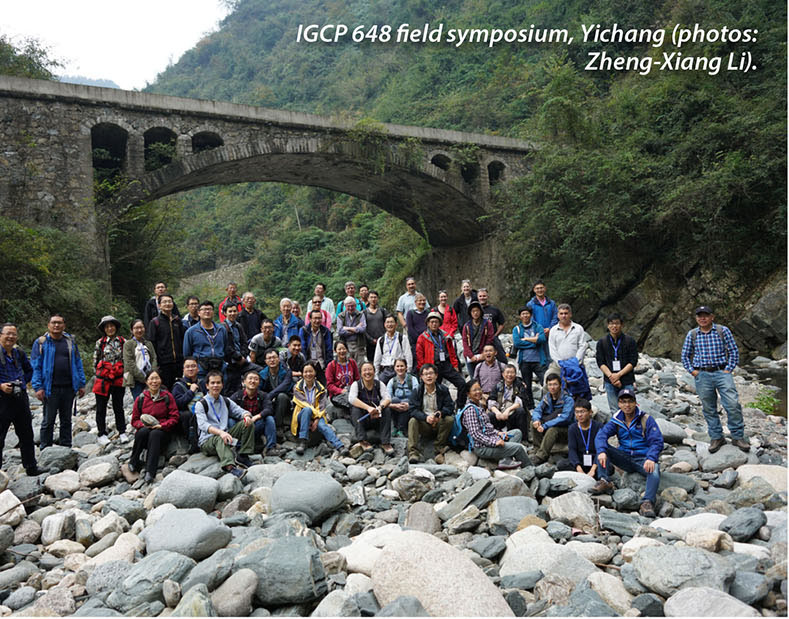
- In July 2018, Macquarie University hosted Geoanalysis 2018. The conference is one of the major international conferences on analytical research in the Earth Sciences and showcased the MQ Geoanalytical facilities and the research in this field at Macquarie University, including the newly installed Thermo Hub and the new Agilent QQQ instrument as its state-of-art instrumentation.
Besides the sizable number of company exhibits, the conference attracted a large number of international visitors, mostly geologists or chemists specialising in the analysis of geological and environmental materials. The meeting provided an excellent opportunity for CCFS postgraduates to present their research to an international audience.
See Abstracts.
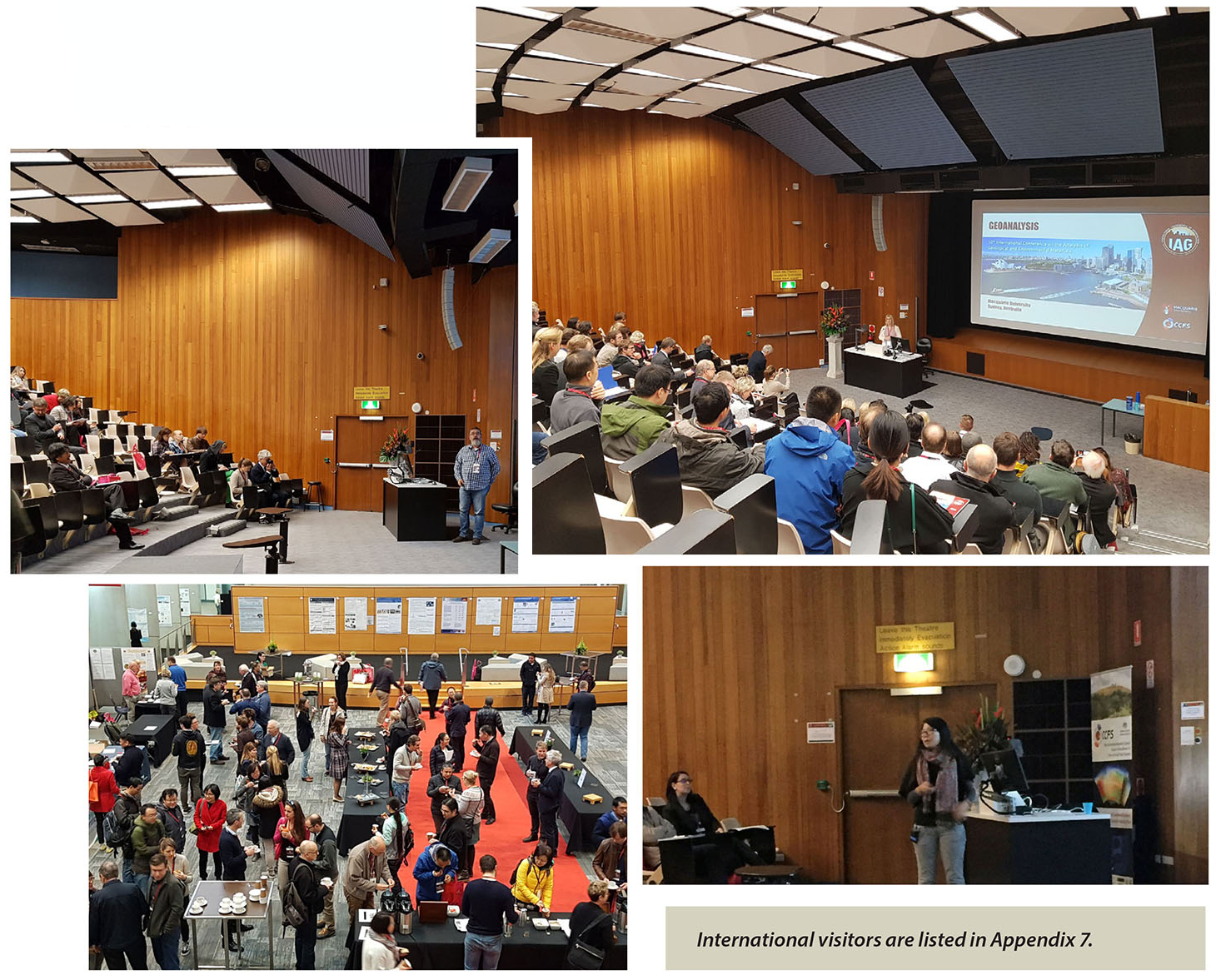
CCFS fosters many of its international links through visits by collaborators to undertake defined short-term projects, or
short-term visits to give lectures and seminar sessions.International visitors are listed in Appendix 7.
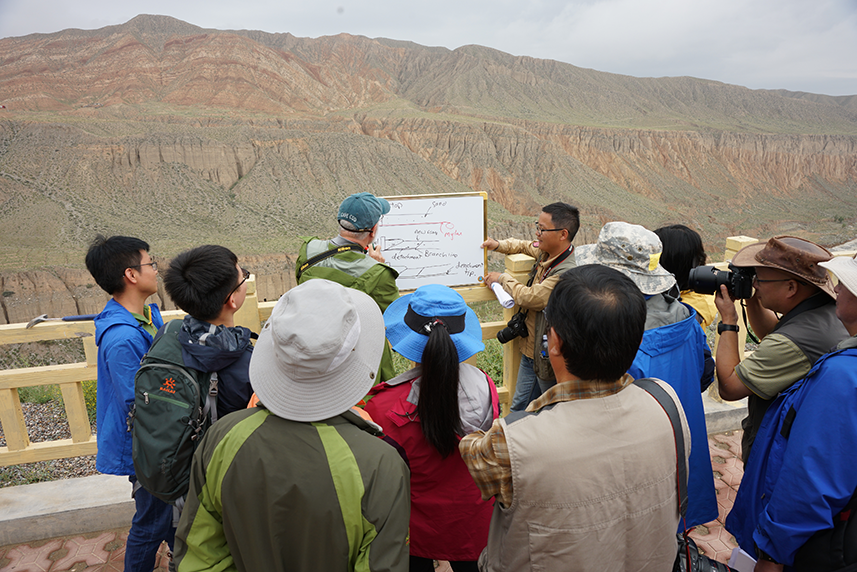
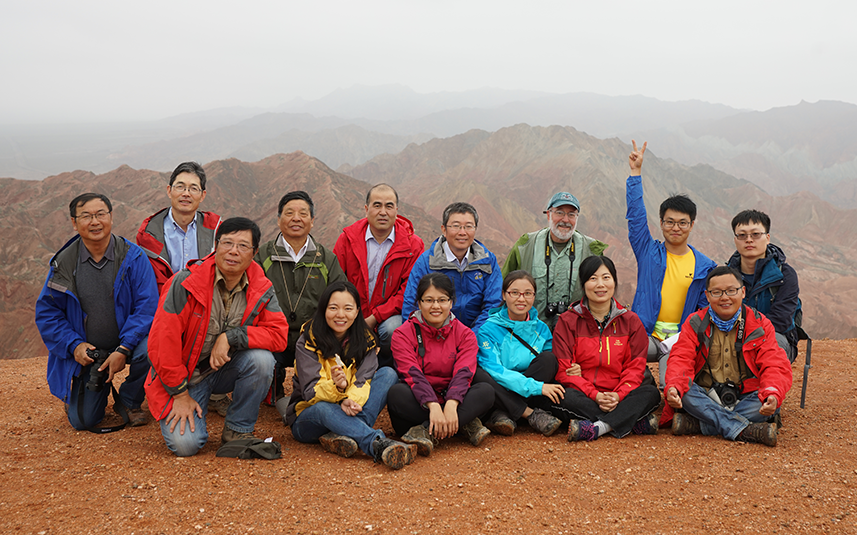
ACTER Field Symposium to the Qilian Mountains.
The 2018 ACTER annual field symposium “Tectonic evolution of the North Qilian Mountains: From Paleozoic oceanic subduction to Cenozoic plateau expansion” was held in Gansu province, China from the 25th August to the 2nd September 2018. The field trip focused on (1) the Early Paleozoic North Qilian Orogen featuring oceanic subduction and arc-continent collision, and (2) the Cenozoic fold-and-thrust belt in relation to the uplift and expansion of the Tibetan Plateau. For more information see http://tectonics.curtin.edu.au/acter-2018-field-symposium/.
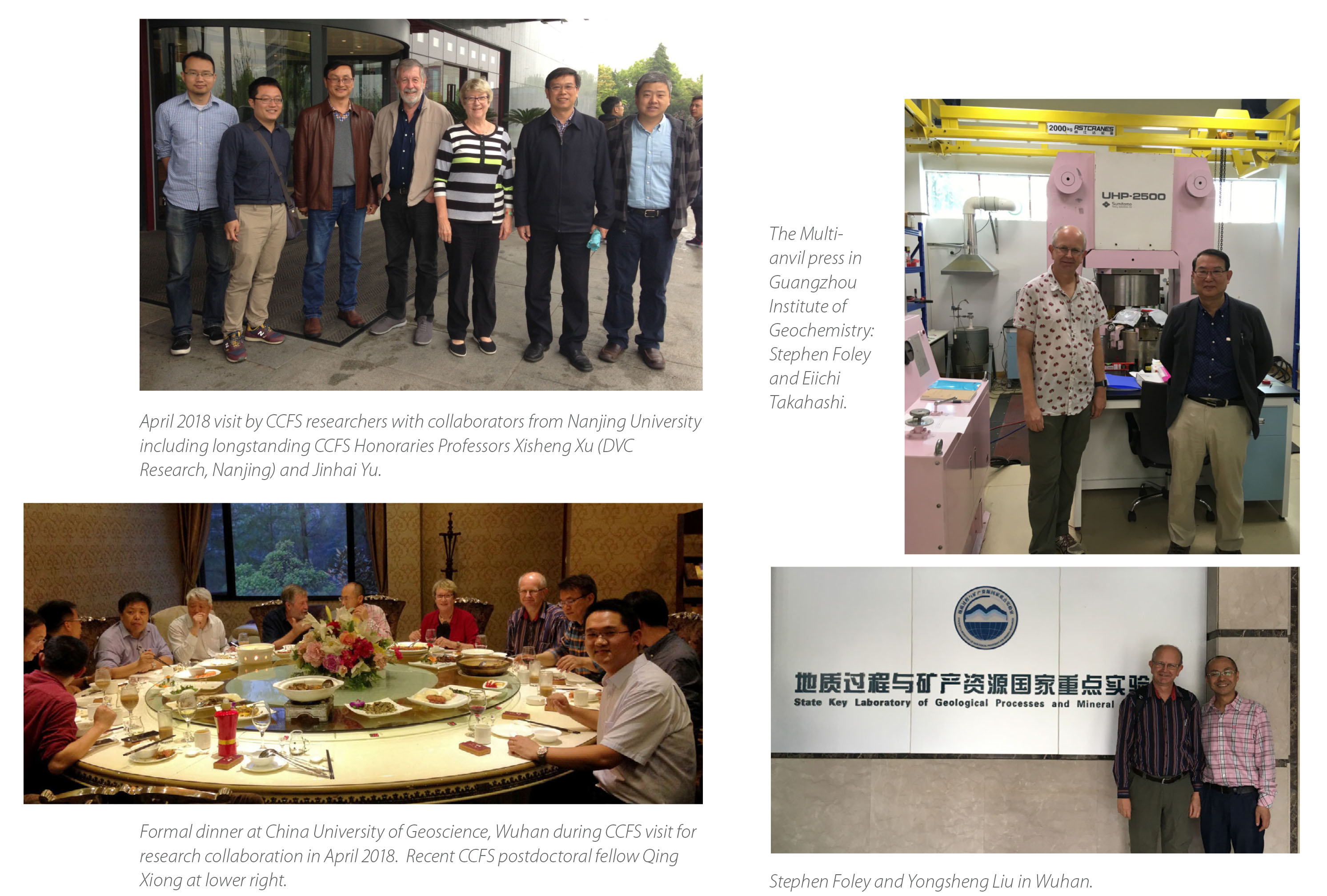
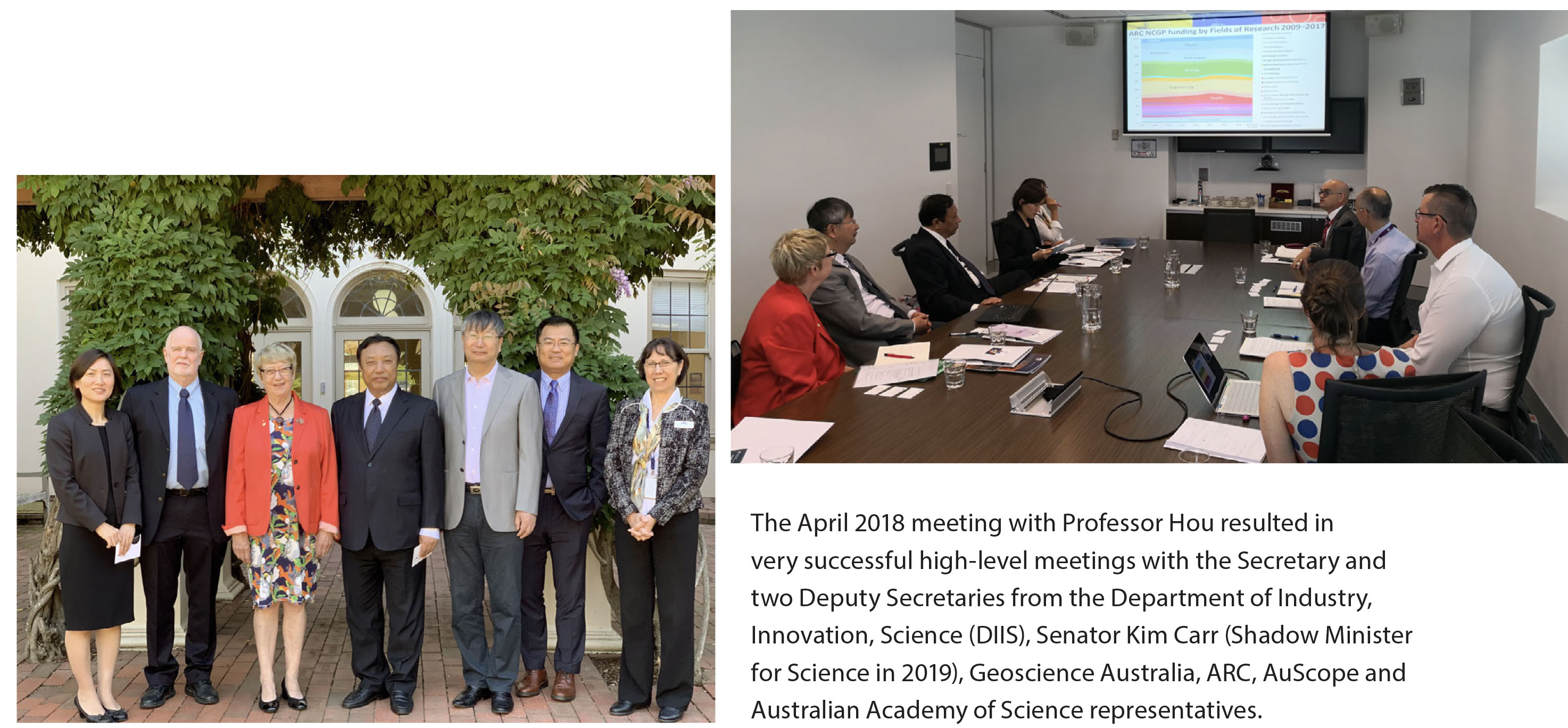

 ARC Centre of Excellence for Core to Crust Fluid Systems
ARC Centre of Excellence for Core to Crust Fluid Systems